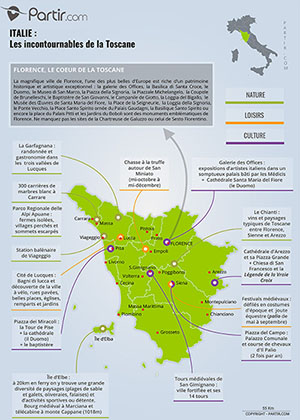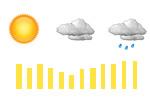Sienne: 4 must-see attractions
Tourist attractions
What is there to see in Siena?

Palazzo Pubblico
As the city's central hub, the Piazza del Campo surprises all who visit with its unique fan shape and slope. On the ground, eight stones separate out nine separate sections evoking the Governo dei Nove (Government of the Nine), which headed the Sienese Republic from 1287 to 1355. These lines converge on the Palazzo Pubblico, the former seat of municipal power, which now houses the town hall and the municipal museum. The rooms within this fortress-like Gothic palace contain a selection of Sienese paintings. The most famous is the sequence of paintings by Ambrogio Lorenzetti, The Allegory of Good and Bad Government (1337-1339), located in the Sala dei Nove : this is the first secular fresco in the history of Italian art, a kind of political manifesto for the Government of the Nine, who sponsored the work. Opposite the window, the Allegory of Good Government: an old man painted in the colors of Siena (representing the common good) surrounded by the cardinal virtues, Magnanimity and Peace, and supported by Justice. On the wall to the right, the effects produced by this good government: the medieval city (Siena) is booming, with builders, craftsmen, merchants and peasants in the rolling fertile countryside. On the wall opposite (in less good condition), the harmful effects of a bad government incarnated by a devious looking tyrant: destruction and desolation have taken over the city and countryside ...
Monuments | Architecture | Heritage | Art & Culture | Museums
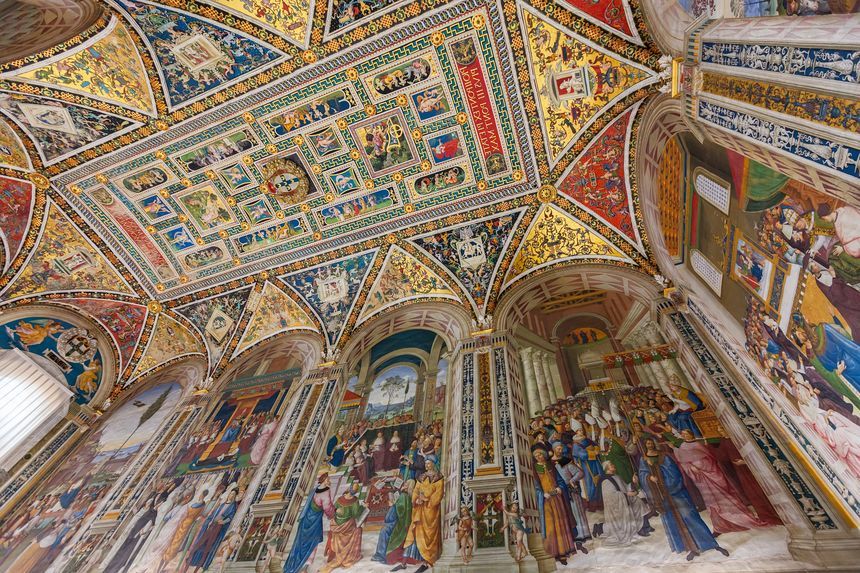
Duomo di Santa Maria Assunta
This Tuscan gothic pearl, in white marble overlaid with dark green stripes (from the serpentine of Figline di Prato), has a beautifully carved facade, partly thanks to Giovanni Pisano (circa 1280). In the gigantic nave, nearly 90m long, punctuated by high pillars of white and green marble, not one inch of the building has escaped the talent of the greatest Sienese artists. While wandering under the 'starry vault of heaven', under the gaze of 171 popes (their busts are placed under the cornices), you can admire the 3,000 m2 of flooring (1369-1547), an exceptional marble mosaic made up of 56 panels. As for sculptures, it's impossible not to mention the Gothic pulpit (1265-1268) by Nicola Pisano, which narrates episodes of the life of Christ; Saint John the Baptist (1455) by Donatello, in the chapel of the same name; or the statues of saints by Michelangelo in the Piccolomini altar ... In terms of paintings, don't miss the Libreria Piccolomini, entirely covered with frescoes by Pinturicchio (1503-1508) depicting the life of Pius II, which reflects humanist spirit in all its glory.
Monuments | Architecture | Heritage | Art & Culture | Museums
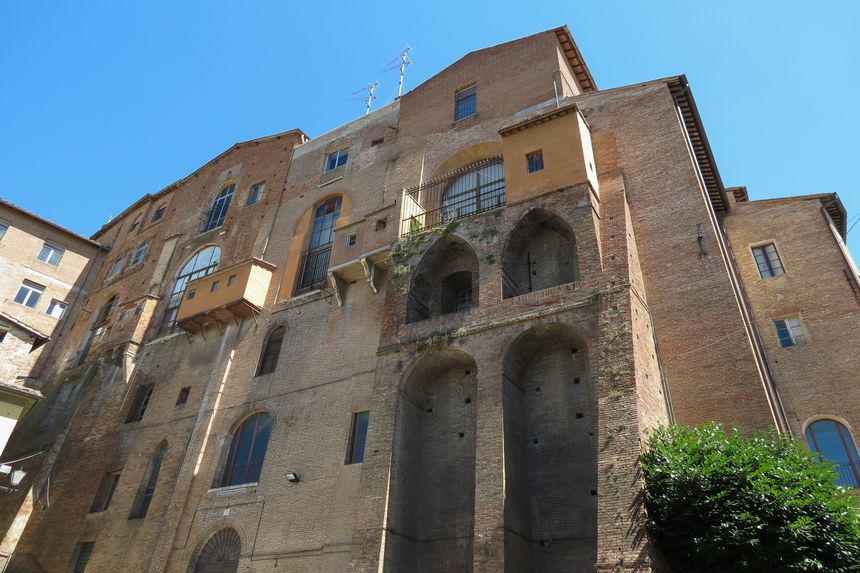
Ospedale Santa Maria della Scala
Opposite the Duomo, this former hospital, founded in the twelfth century to accommodate pilgrims traveling along the Via Francigena, mainlty destitute and abandoned children, is now a leading centre for the arts. Showcasing more than 1000 years of the city's history, the complex is made up of different areas churches, chapels, oratories, vestibules, common rooms, underground chambers ..., all on several levels. In addition to the national archaeological museum on the ground floor, original sculptures by Jacopo della Quercia for the Fonte Gaia (the fountain of Piazza del Campo), you will no doubt visit the Sala del Pellegrinaio , with is sequence of frescoes from the fifteenth century devoted to the history of the institution and the daily life of the hospital and the Sagrestia Vecchia , decorated with frescoes (1446-1449) by Lorenzo Vecchietta which illustrate biblical episodes.
Monuments | Architecture | Heritage | Art & Culture | Museums
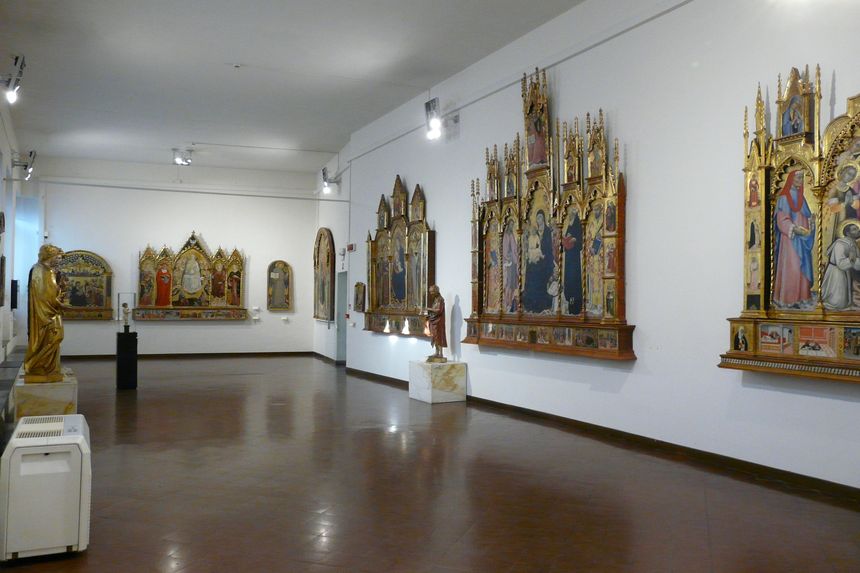
Pinacoteca nazionale (National Gallery)
A real aesthetic shock for art history lovers! This museum contains the most priceless Sienese painting treasures from the 14th and 15th centuries. To better understand the chronology, you need to start your visit on the second floor with the "primitives" and painters from the fifteenth century: Duccio di Buoninsegna, with his dazzling Virgins and Simone Martini, his pupil, creator of the splendid Maestà for the Palazzo Pubblico, the Pietro brothers and Ambrogio Lorenzetti, Giovanni di Paolo or Sassetta ... The go on to the first floor, where you can find paintings by Beccafumi, a great Mannerist painter who also worked at the Palazzo Pubblico and signed some of the Duomo's flooring panels, and his master, Il Sodoma, a native of Rome, but adopted by the Sienese. Finally, on the third floor, the Spannocchi-Piccolomini collection includes Italian and foreign works from the 16th and 17th centuries, particularly from Northern Europe, including a painting of 'Saint Jerome in his Study' by Dürer.
Museums | Architecture | Heritage | Art & Culture | Monument
You may also like
-
Flights to Tuscany
All you need to know before buying your plane ticket
-
Tourist maps
Region, attractions and distance map Tuscany!
-
Hotel or vacation rental?
Find your dream accommodation in Tuscany at the best price...
-
When to go?
Be sure to visit Tuscany at the best time of year!
and why not...
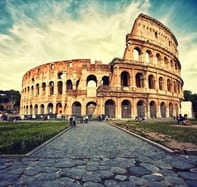 Roma and Latium
Roma and Latium


